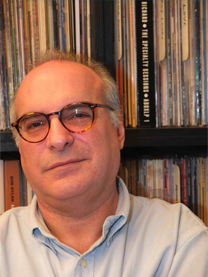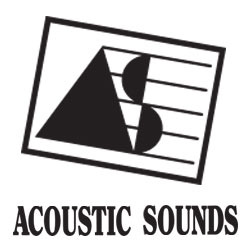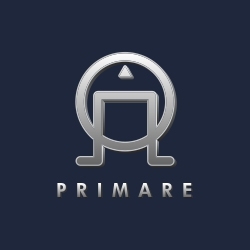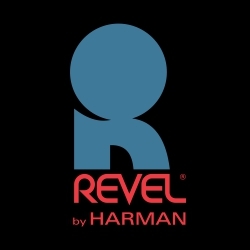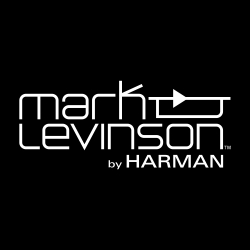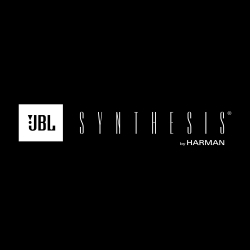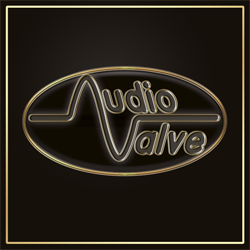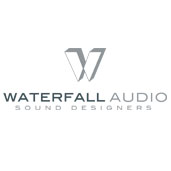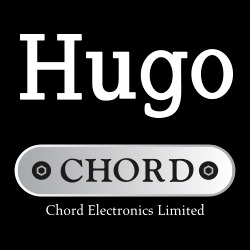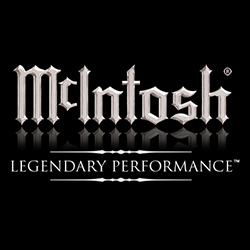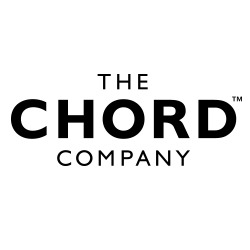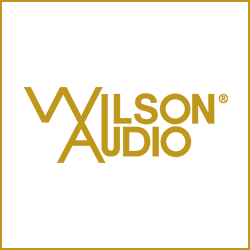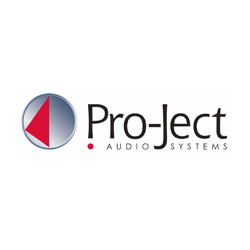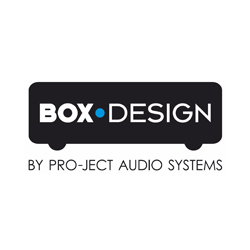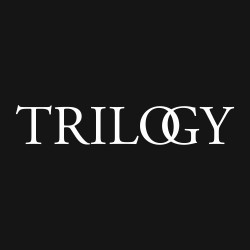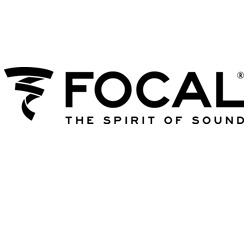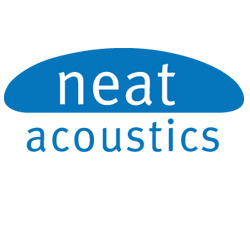Just what the audio community needed: a smash hit. Given that even the industry’s most Pollyanna-like naif would have had a hard time smiling through the catastrophe that was the 1994 Summer CES, the January event in Las Vegas seemed like a miracle. Huge? There are some who believe it might have been the biggest and best in the exhibition’s history, in marked contrast to last June’s non-event. And that includes me.
Statistics hounds are always well-served by the Electronics Industries Association (EIA), and it was only a matter of weeks before the mailman delivered the post-mortem press release and the latest edition of Consumer Electronics U.S. Sales 1990-1995 est (only $95 per copy for civilians). And both items make interesting reading. Without lapsing into minutiae like the “Unit Sales Of Cellular Telephones In 1991”, I can tell you that 2,090 brands turned up with a staggering 40,000 products and over 1,000,000 square feet of floor space was needed to accommodate it all. Far more important, though, is this figure: 103,282 people attended the CES, representing all aspects of the home entertainment industry. And they arrived from 109 countries. Which is probably more than are represented when the U.N. hosts an assembly about the problems in what was Yugoslavia.
With this recipe for optimism in mind, it’s easy to think that all is well in consumer electronics land. And once you flip open the aforementioned answer to Nostradamus, you note that virtually every single category — from “Direct-View Color TV Receivers” to “Electronic Gaming Software” — suggests a steady increase in unit sales and dollar salesas well as a decrease in unit prices. What had me flummoxed, though, was the lack of any detailed itemization of hi-fi components into categories other than “Rack Audio Systems”, “Compact Audio Systems” and “Separate Audio Components”. And it’s the latter which concerns us. Oh!, how I wish it was broken down into “Speakers”, “Amplifiers”, and the like. Only “CD Players” had its own category, and that probably included everything which can spin a disc. What’s mind-boggling is that the total dollar value of CD player sales was greater than those for separate audio components — like, uh, more than double.
Am I doing anyone any favors by telling you that the dollar turnover for hi-fi separates is lower than that of “Aftermarket Autosound Equipment”, too? I thought not. Suffice to say that sales of everything which is covered by the “Separate Audio Components” umbrella came to $1,690,000,000 for the last complete year (1993). The good news? The EIA predicts small but significant increases this year and the next in unit sales and dollar value. Oh, and this follows a low point of $1,586,000,000 suffered in 1992. But lest you think that this tasty sum is shared among the specialist or high-end brands, note that the book is based on estimates from only 46 companies, over half of which are gigantic Asian or European concerns and precious few of which produce hi-fi separates.
But just what is going to provide the injection of enthusiasm needed to create the forthcoming upsurge in sales? Cheating a bit by including that newest and most popular of audio peripherals — home cinemaware — I can tell you that the exhibitors at the 1995 Winter CES embraced, almost universally and unanimously, a few technologies which must surely have acquired “trend” status: High Definition Compatible Digital (HDCD) hardware and software, home cinema’s forthcoming digital surround formats, the continuing tube revival, the continuing survival of vinyl records, jitter busting devices and other mini-themes like the proliferation of single-ended triode amplifiers. Hey, there’s even a revival in kit-building.
HDCD®, the encode/decode system for reducing distortion in digital audio recordings developed for Pacific Microsonics by Keith Johnson and Michael Pflaumer, had its debut a few years back in the form of encoded CDs released by Reference Recordings. Even without access to HDCD players, numerous Golden Ears who sampled the first discs felt that HDCD CDs sounded “better” than their non-HDCD equivalents, even on conventional players lacking the HDCD chip. The Winter CES was the first to provide visitors with a chance to hear players with the HDCD-decoding chipsets, with Spectral — source of the first official demonstration — leading the way.
Counterpoint’s DA-10 D/A converter has been approved by Pacific Microsonics for HDCD certification and owners of existing DA-10s can add it through an upgrade card costing under $500. The upgrade also includes the company’s own new jitter reduction circuitry to improve the playback of all digital sources, not just HDCD discs. Enlightened Audio Designs’ Series III products feature HDCD in conjunction with the Digital Flywheel, EAD’s proprietary jitter reduction circuitry. Also licensed to produce HDCD decoders are Adcom, Audio Alchemy, Classé, Kinergetics, Madrigal, PS Audio, Sonic Frontiers, Theta and other major players, while Pink Triangle is the first British brand to commit to the new technology. All we need now are record companies from outside the audio community (read: major labels) to incorporate HDCD into their systems.
It’s hard to say whether or not there’s going to be a battle let alone a war to decide what format will be THE digital surround-sound standard chosen by the industry. Then again, the word “Dolby” is not unlike a Good Housekeeping Seal of Approval, so expect the “D” logo to appear on your future processors’ front panels, and for a long time to come. I haven’t heard all of the challengers, but it looks like Dolby AC-3 will win because of sheer momentum and the public’s general confidence in (and awareness of) Things Dolby. Professional demonstrations took place not just at the Convention Center but at every show site, with both mass-market and high-end makes involved. These included Denon, JBL, Pioneer, Yamaha and Kenwood among the majors, while purist companies like EAD and Perreaux (with Monitor Audio speakers) held up the specialist end.
For those not reading our sister publication Sound & Image, Dolby and Pioneer have jointly developed laser discs in which the right (analogue) FM channel is replaced with the AC-3 bitstream. This provides five discrete channels of surround information and an additional bass channel from a readily-available software format; blessedly, it’s fully compatible with your existing laserdisc player.
Other hi-fi brands showing more than a passing interest in home cinema included Krell with prototypes of a multi-channel power amp (accepting up to five 100W modules) and a full-function home theater pre-amp in the wings, Apogee demonstrated a surround-sound system for ribbon lovers, and Magnepan demonstrated its new Magneplanar center-channel speaker by setting up two of them as main speakers to show off the sound quality.
Mission unveiled and all-in-one home cinema “command center”, tentatively titled the AV-Gram. In one enclosure, which looks just like any cabinet you’d use under a large-ish TV monitor, Mission has fitted five 100W channels’ worth of Cyrus power, a surround processor (final type still to be decided), a pair of subwoofers at the sides, a center speaker, a full-function learning remote control, AM/FM radio and a full-function pre-amp. Since the system also includes the rear channel satellites, all that you add to it to complete the package are the TV, choice of video source and the main speakers. And it’s all contained in a glass-fronted cabinet which also holds the VCR or laser-disc player and a TV up to 35in in screen size — welcome the home cinema equivalent of the old “radiogram”.
Audio Research launched the SDP1 surround sound decoder, aimed firmly at purists: the front (main) channels are completely isolated from the processing stages to eliminate any possible (main) signal degradation. The SDP1 avoids Dolby Pro-Logic decoding, too, the company using instead matrix derivations which probably can be traced back to vintage (and timeless) Hafler ambience retrieval. EAD’s latest version of the TheaterMaster™ includes both HDCD D/A conversion for your audio-only CDs and true 5.1 channel surround decoding, courtesy of the Zoran 38001 decoding computer; EAD believes that it’s the first company on the market with true 5.1 decoding, but they didn’t count on Onkyo. This company launched a pair of new A/V receivers, the TX-SV525 and TX-SV727, plus the A-SV620 integrated amp, each featuring a Motorola 56000 DSP for true digital surround decoding.
Meridian again showed a multi-channel system but avoided the use of a normal video source. (This year’s played-to-death demo film, by the way, was Cliffhanger, with some die-hards still using the train crash from The Fugitive.) Meridian used MTV-like computer images said to make people more receptive to the music itself. Any thoughts of a Sixties revival are about a year too late.
The home-cinema readiness also applied to speakers, like the aforementioned Apogee and Magnepan systems and the complete Martin-Logan set-up, the first view of the long-awaited Vandersteen VSM-1 side-channel speakers with on-wall mounting at $695 per pair, the wild KEF Ci-130DS for dipole behaviour from an in-wall design and their motorised Ci-200QT which contains a 12-volt motor drive system to tilt the speaker out of the ceiling for play or returning it to rest.
Returning to two channels, there was a noticeable increase in multi-disc CD players, evidence of both the increased demand for convenience and the continued growth of multi-room/install systems. Hey, let’s face it: when you’ve fitted a house with speakers and remote control repeaters in every room and the CD player is three rooms or one floor away, you want maximum playing times. Onkyo contributed a couple of six-disc machines, the DX-C320 and C220, for $300-$330 but the move to the $450-$600 category means 100-disc CD changers for the price of last year’s five-disc carousels. Aiwa and Kenwood also have low-cost 100-disc players, Technics a 50-CD machine and Harman’s forthcoming Citation accepts 150 discs. Pioneer’s PD-F1004 at $599 adds remote control programming through a graphic user interface (GUI) and with on-screen display.
For the specialist high-end CD converters and spinners, it was top-loaders and jitter-busters. Genesis demonstrated the Digital Lens for $1500, promising jitter reduction below 20ps, through the use of a temperature compensated oscillator. The Digital Lens will show with constant real-time analysis the number of errors in the transport’s timing via a front panel display. Two new D/A converters were added to PS Audio’s acclaimed line-up, the DL Three with 20-bit architecture and Burr-Brown DACs and the SL Three with HDCD. HDCD also features in Mark Levinson’s No. 30.5 and No.36 processors.
Audio Alchemy’s third-generation jitter reducer is the DTI-Plus, while the regular DTI now exists as v2.0. The company’s HDCD-compatible converter is the Digital Decoding Engine v3.0 and there’s an absurdly inexpensive, entry-level converter called DAC-MAN. This cigarette-pack-sized decoder uses Crystal converters housed in a custom extrusion and it has inputs for both TOSlink and coaxial signal. Fixed to its outputs is a pair of Tara Labs cables. And all for only $159 complete. New players from AA include the DDS III with its all-new Sony-made mechanism and “soft touch” keys, 18-bit resolution, a one-bit DAC and remote control; the DDS-Pro adds an outboard power supply, a Pioneer Stable Platter mechanism and inverted disc playback.
Among heavy-weight transport makers, Jadis issued the JD2 at $8000, 25% less expensive than the awe-inspiring JD1. The company used the same transport but with a different laser, and a less sophisticated suspension. Up in the Ferrari class is Barclay’s X1000: it weighs 100lb and it’s machined from a solid billet of aluminum. The X1000 uses the company’s proprietary drive mechanism with a “tonearm” and a swingarm, drive is via belt and a heavy duty moving coil motor, there’s a three-bearing spindle and this top-loader doesn’t require a puck.
Trends among the speaker builders? There’s a mini-revival in electrostatics, with Electrostatic Research showing the compact Model III. Measuring 48x12x11in (HWD), it’s a hybrid with a 6in woofer crossing over at 400Hz. Price was so low, if I heard it correctly, that I won’t repeat it out of superstition. Audiostatic introduced a couple of ported baby hybrids, including the ESH 50 (1570mm tall) and the ESH 100 (1870mm tall). Martin-Logan upgradedthe Sequel, now called the SL3. It’s still a hybrid but apparently everything’schanged: the curvilinear electrostatic element now operates from 250-24kHz, vapour deposit is used to apply the 20-angstrom-thick conductive surface, mechanical/acoustical pressure compensation technology eliminates the need for tone shaping with an insertion loss crossover, and it’s still the prettiest speaker in town.
Downsizing, too, was a hot topic. Apogee’s first mini is the Ribbon Monitor: 420x230x290mm (HWD). The lower frequencies are handled by a 6.5in woofer with a 1.25in high-power voice coil and large shielded magnet, while the high frequencies, from 2kHz on up, are the concern of the 4in classic Apogee corrugated ribbon. Mounted within a square frame, the ribbon can be turned 90 degrees to allow for vertical or horizontal speaker positioning. The Ribbon Monitor is rated at 87dB/1W/1m, handles up to 200W and will retail in the US for under $1000 per pair.
Platinum’s Solo is a gorgeous little curved-front two-way monitor measuring 205x330x350mm (WDH), available in all sorts of sexy finishes. Two ports fire out of the back, and the speaker is bi-wireable. Dzurko Acoustics featured the slope-baffled Jaguar bearing a 28mm hand-doped, ferro-fluid cooled tweeter and 175mm fibre-coned woofer. Bass loading can be modified with the optional Environmental Adaptor Module (EAM) which installs in a tape loop or between pre- and power amps. The EAM ‘allows precise adjustment of bass and mid-treble balance’ to match the room. Totem’s latest two-way is even smaller than its existing, highly-rated miniature predecessors. The Mite measures 270x152x227mm (HWD) with internals of 5.6 litres, yet it sounds big enough — on a good, rigid stand — to fool you into thinking that it must measure two gallons at least.
On the amp front, it really was tubemania, with three particular models earning a disproportionate number of lustful sighs. From Italy, there’s the simply breathtaking Pathos Twin Towers tube/solid-state hybrid (shown above) is an integrated amplifier producing Class-A 30W/channel. The volume control is a true stepped attenuator, the chassis is a low-profile mix of chrome and wood, the two ‘towers’ are befinned active stages for maximum cooling (aided by whisper fans), the tubes are positioned in cages at the front… But that Italian styling — molto bello!
From Australia there’s the heart-stopping Micrex range, four components I wanted to take home with me. The L-1 is a luscious, wooden-chassis’d integrated amp good for 75W from its Golden Dragon EL34s, the P-1 is the power-amp-only version, and there’s also the R-1 pre-amp. For the hardcore, there’s the M-1 monoblock, good for 90W from the oft-cited Russki army tube, the 6C33C-B. All Micrex units share no-compromise build quality, elegant styling, real wood chassis and stunning performance.
And then there’s BALANCED AUDIO TECHNOLOGY, probably the single most-talked-about product of any type at the show. The VK-5 pre-amp is built to battleship standards and features no-compromise componentry, dual-mono topology, a complete absence of relays or switches in the signal path, eight of the very fashionable 6922 tubes and a couple of 5881s. Fully balanced in and out, zero global feedback, soft switch-on — it’s aimed at the top of the heap. And it was heard driving the company’s positively debonair VK-60 power amps: 60W/channel in stereo or 120W in mono, the power derived from super-macho Russki military glassware. All-triode, zero-feedback, single-ended — this is one to covet.
There were the new tubes. VAIC was showing the VV30B, that new substitute for the 300B, along with the VV50B and VV52B, Golden Dragon announced a new KT90 based on Telefunken’s EL156, available in deluxe form with titanium anodes as the KT90 LX; Quad II owners will be pleased to know that it can be purchased with KT66 characteristics as the KT66 Super. The biggest news of all? Western Electric will be reissuing the coveted 300B. For details and to prove I haven’t made it up, call (404) 874 4400, East Coast time, or FAX on (404)-874 4415.
Most “thought-provoking” new item? No question: the NEST (Naturally Enhanced Sound Transmission) from Bio-Innergy Systems. This is a 69in tall geodesic frame with four small speakers situated in the upper corners, some cushions and a subwoofer. It’s made from large diameter aluminium tubing, and listening to music while inside this frame is supposed to…I’m not quite sure. Its benefits include M.I.N.D.™, which stands for “Music Interacting With Natural Dynamics”. And there’s the MINDSONG™ circuitry which allows you to “create your own music through Sensor/Processor control. No music lesson is needed!” And A.N.D.I.™, the “Analog Neural Digital Interface” Talk Function to help you develop a relationship with your sensor. All yours for just under $9000…
(Audio, 1995)
